In this article I want to share patterns of dresses with one-piece sleeves. Why with all-cut? Because the proposed patterns are very simple and girls with basic sewing knowledge can easily sew an outfit.
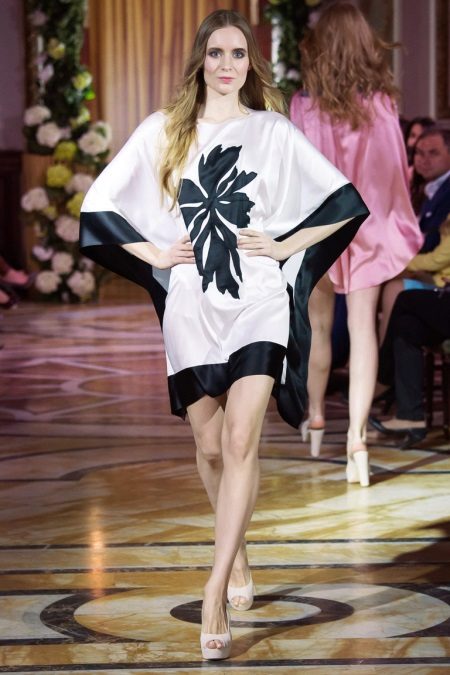
There is no reason and reason not to wear a dress with a one-piece sleeve. Romance will be expressed in a flying sleeve made of chiffon, status - in an atlas, femininity - in knitwear.
One-piece sleeve has a place in any style. So get down to business.

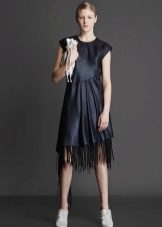
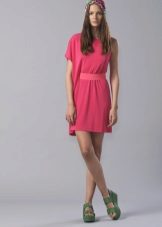
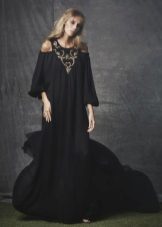

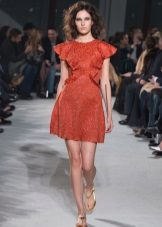
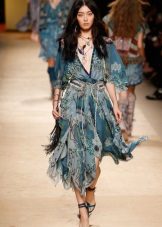
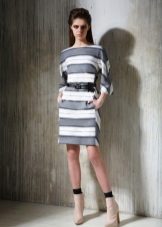
Simple pattern of a direct dress
A simple cut is an ideal solution for fabrics with a rich appearance, with a fancy pattern or with just a beautiful print.
This model is attractive with one-piece sleeves with straps and a deep neckline on the back.
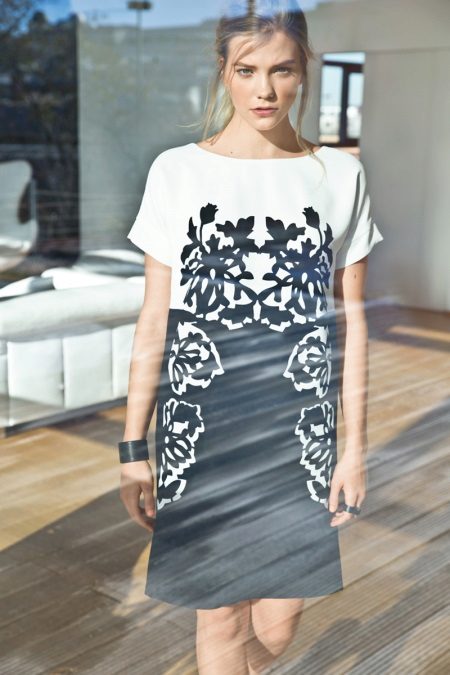
Cut
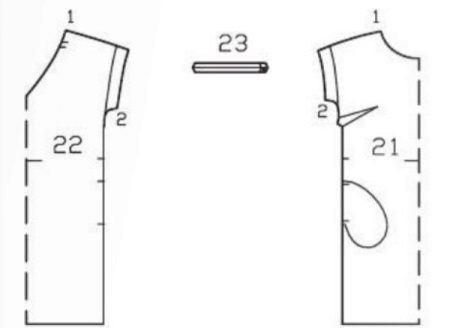
Open from the lining and the main fabric in front and back with one-piece sleeves with a fold, burlap pockets in the amount of 4 pieces, jumpers for the back and straps for the sleeves.
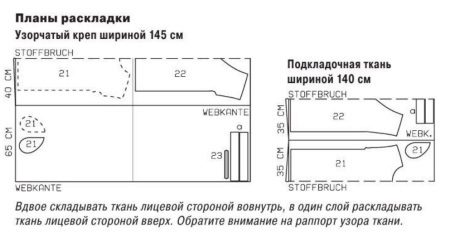
Sewing
- At the front, grind the tucks.
- Perform shoulder seams and seams on the sleeves. Leave space for the pocket in the side seams.
- Stitch pockets into side seams.
- Stitch the jumper and sweep the back of the neck to the left cut.
- Grind the tucks on the lining, and also make shoulder and side seams.
- Pin the lining to the cut of the neck of the main fabric and stitch.
- When trying on a dress, attach the open end of the jumper under the right edge of the neck of the back.
- Lock the jumper under the left edge of the neckline with a button.
- Stitch the details of the straps of the sleeves from the lining and the main fabric along the lower sections, then sew the short ones.
- Stitch open sections of planks to the sleeves, aligning the seams.
For full
An airy dress with a shawl print and wide sleeves envelops ease and at the same time elegance. And the elastic waistband emphasizes the waist.
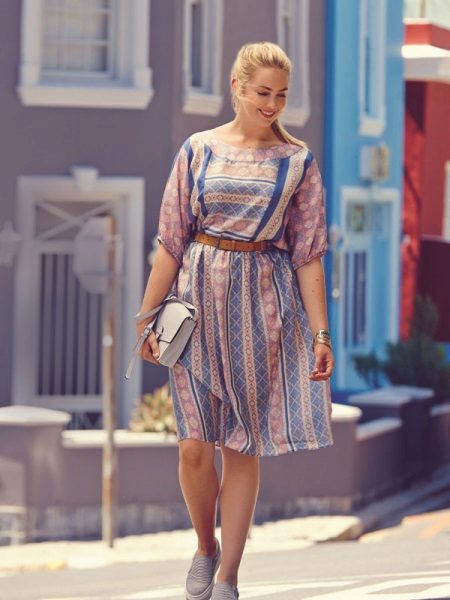
Remove all the details from the silk cambric, adjusting in size.
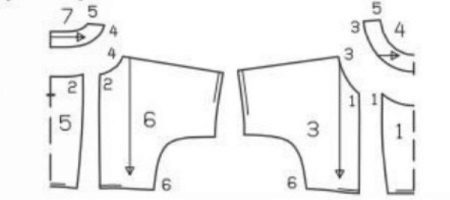
The back and front consist of 3 parts: one central and 2 side. The edging is not one-piece. And you still need a button.

Back section
Mark the cut on the central part of the top of the back. A cut rectangle 12 * 4 cm, which is superimposed on the marked cut line and sewn, can serve as a cut cut.
You can separately carve out a one-piece facing for the neck of the back with a slit.
Sewing
- Stitch the sides of the bodice from the center, do the same with the details of the back.
- Stitch the inlines to the neck of the back and front if the incision has been sharpened separately.
- Stitch the shoulder seams and upper seams of the sleeves.
- Turn the neckline.
- Stitch side seams and bottom seams on the sleeves.
- Sew a skirt and stitch to the top of the dress.
- Tighten the seam allowances on the skirt and hem the sleeves and stitch them for drawstring. Pull an elastic band or elastic band into the wings and stitch open areas.
- Fold the bottom of the skirt.
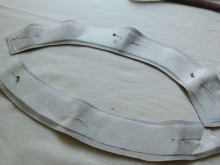
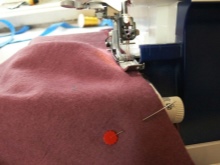
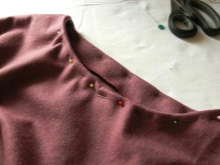
Autumn
There is another version of the dress with a one-piece sleeve and a cutting top. He has every chance to faithfully and truthfully serve as a little black dress. If you want, you can experiment with colors, for example, black top and white bottom.
It is better to take a fabric of medium density with a high content of elastane.
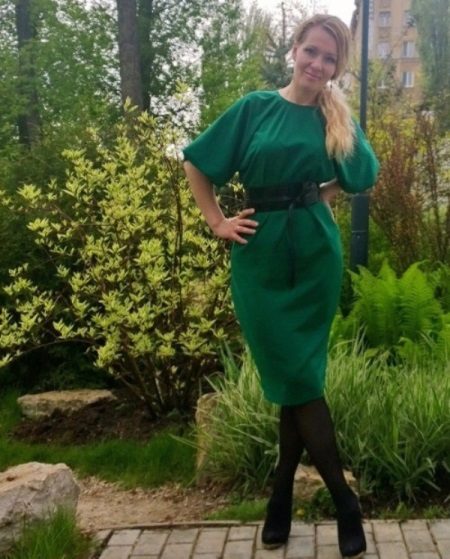
The top of the dress is cut out in half-folded fabric, so the sleeves are solid. Be sure to place marks in the center of the back and front.

The dress is without a lining, so you need a stitch glued with doubler.
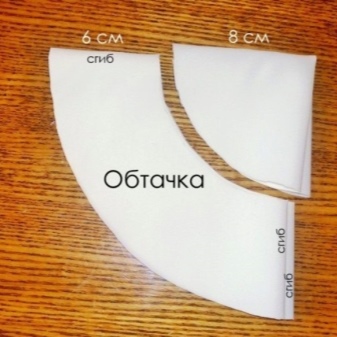
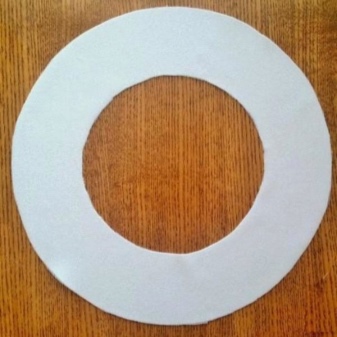
Cut out the skirt by folding the fabric along a 4-layer shared fabric. If you wish, you can also carve a belt. Its length will be 2.5 m.
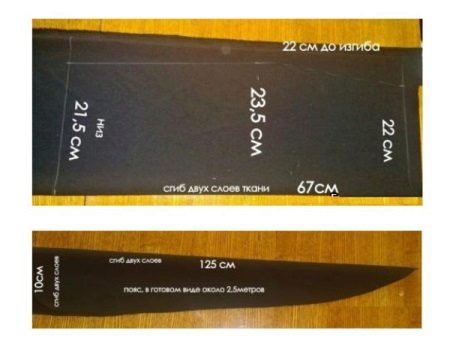
Let's start stitching the parts:
- process the overlock on overlock;
- fix the trim on the neck of the top of the dress with pins, aligning the marks. In this case, the edge of the neck should be larger than the edging;
- form folds in the neck;
- grind and grind so that it does not turn out;
- sew the top on the sides, and process the edges of the sleeves by 1 cm to thread the elastic;
- sew a skirt;
- Stitch the skirt and top by connecting the side seams.
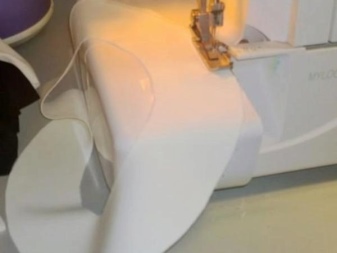
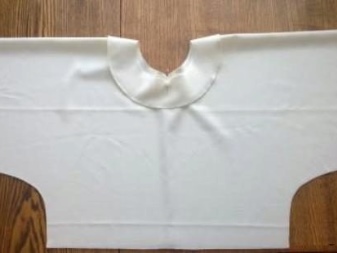

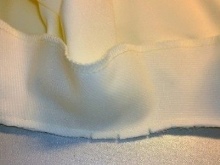
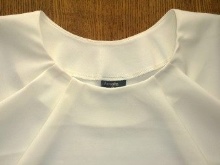
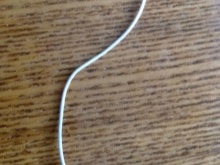

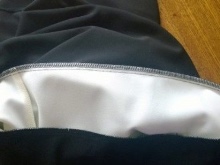
Short Sleeve Knitwear
A fitted dress in the style of color blocking thanks to embossed seams allows you to play with a color palette, and most importantly, it suits any figure.
The dress is very practical if you wear each, as it is made of non-creasing hi-tech knitwear.

Sewing
Cut out all the details from the black and yellow knit fabric.
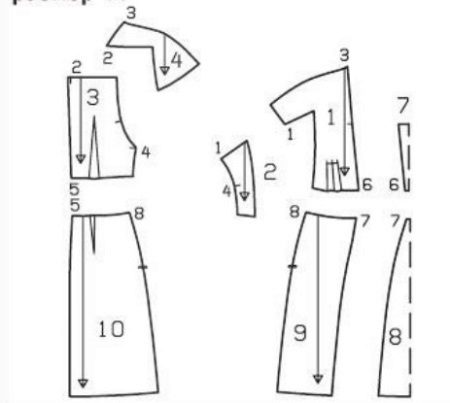
- Lay pleats on the middle details of the top of the front.
- Stitch the sides of the shelf with the middle ones from the control marks to the corners.
- Cut the allowances in the corners, then grind the shelves from the corners to the lower sections.
- On the details of the bodice of the back, grind the tucks and sew both halves.
- Perform shoulder seams from the control marks.
- Iron the upper section of the front insert and sew on with your hands. Stitch the insert from the bottom to the cross marks.
- Iron the allowances along the neckline to the seams of the back sewing coquette back and sew it by hand.
- Stitch the coquette to the back to the marks. Cut the allowances in the corners and continue the stitching line.
- On the bodice of the dress, make a side seam from the control mark.
- Iron the hem of the armhole and the bottom of the one-piece sleeve and hem.
- Stitch tucks on the skirt. On the back panel, make the middle seam, and on the front - embossed.
- On the skirt, perform the right side seam.
- Stitch skirt and bodice.
- Sew a zipper and hem the bottom of the skirt.
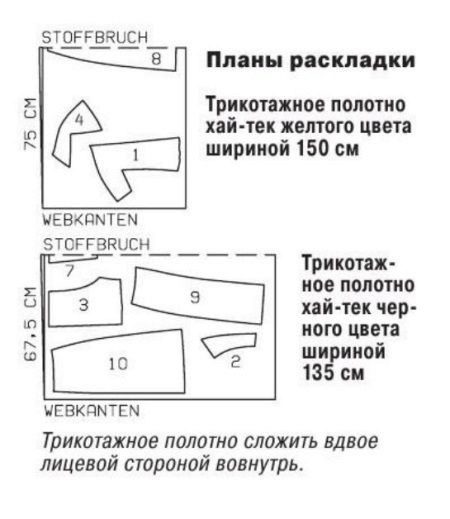
Long sleeve kimono dress
Probably, there is no point in repeating and laying out another pattern of a straight dress, only with a long one-piece sleeve. Indeed, in any pattern you like, you can lengthen the sleeve and adjust its splendor. Another thing is a kimono dress, tender and feminine.
Here is the pattern modeling example itself.
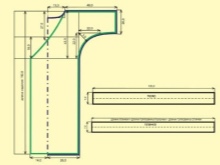
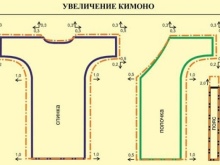
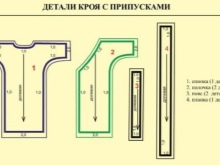
Video
How to sew a charming dress without a pattern, see the video.
The methods for tailoring a one-piece sleeve dress are very different. And this allows, based on the existing patterns, to create new and unique models.











